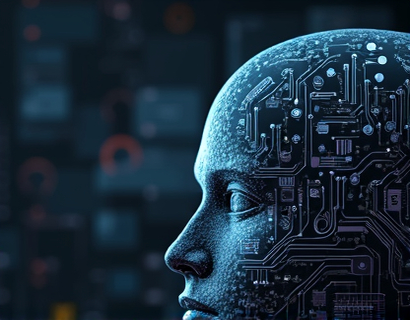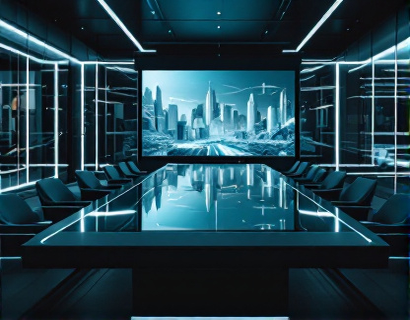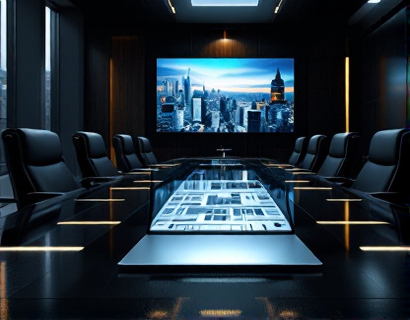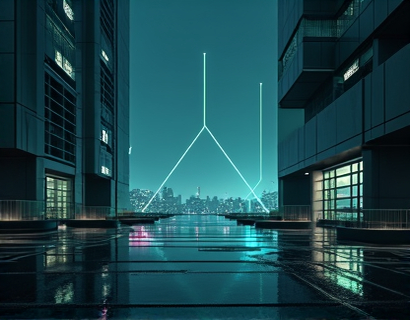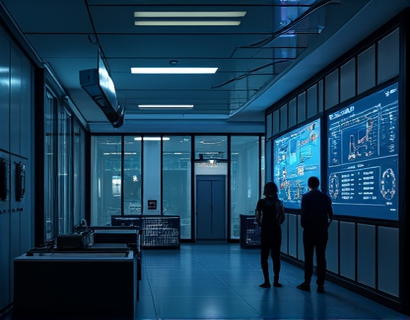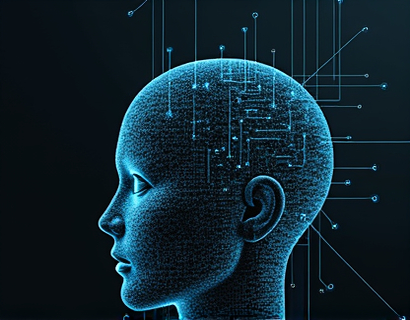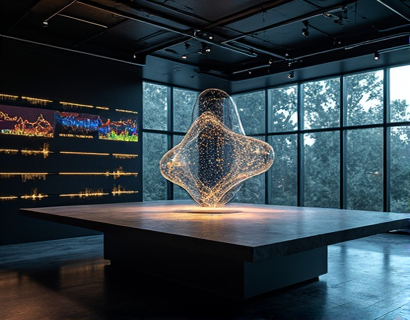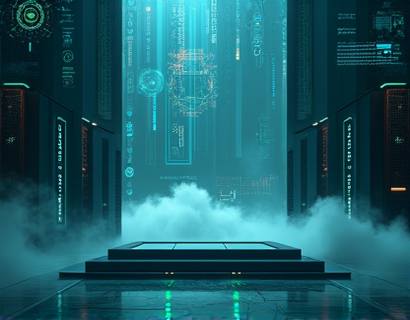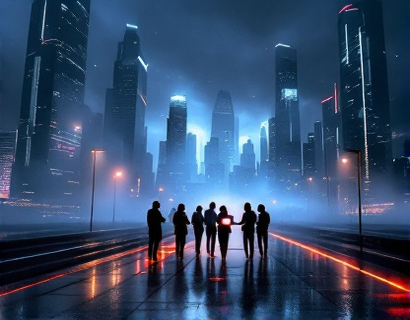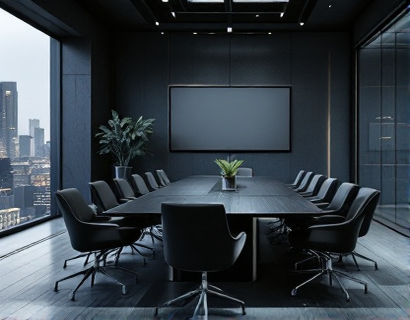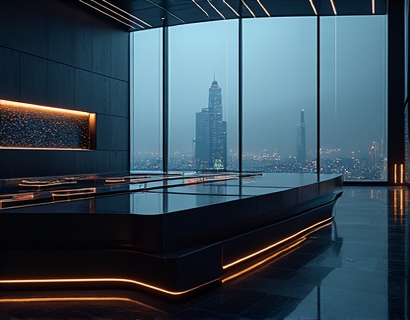UX Design Trends 2025: Navigating Innovation and Transformation
In the rapidly evolving landscape of digital design, staying ahead of the curve is crucial for success. The year 2025 brings a new set of UX design trends that focus on innovation, transformation, and enhancing user satisfaction. This article delves into the latest insights and expert strategies to help designers navigate these trends effectively. From accessibility and inclusivity to emerging technologies and data-driven design, we explore the key areas that are shaping the future of UX design.
Accessibility and Inclusivity
Accessibility has become a cornerstone of UX design, ensuring that digital products are usable by everyone, regardless of their abilities. The Web Content Accessibility Guidelines (WCAG) continue to evolve, with WCAG 2.4 and future versions emphasizing more stringent requirements. Designers are now focusing on creating interfaces that are not only compliant but also intuitive and user-friendly for all users. This includes implementing keyboard navigation, screen reader support, and ensuring sufficient color contrast.
Inclusivity extends beyond accessibility, encompassing a broader range of user needs and preferences. Designers are adopting a user-centered approach that considers diverse backgrounds, cultures, and abilities. This involves conducting thorough user research to understand the unique challenges faced by different user groups. By incorporating diverse perspectives, designers can create more empathetic and inclusive designs that resonate with a wider audience.
Voice User Interface (VUI) Design
The rise of smart speakers, virtual assistants, and voice-activated devices has propelled VUI design to the forefront of UX trends. Designers must now consider how users interact with their products through voice commands, ensuring a seamless and natural conversation flow. Key aspects of VUI design include crafting intuitive conversational paths, designing for context awareness, and providing clear feedback to users.
One of the challenges in VUI design is handling ambiguity and ensuring that the system can understand and respond to a wide range of user inputs. Designers are leveraging natural language processing (NLP) and machine learning to improve the accuracy and responsiveness of voice interfaces. Additionally, integrating visual elements, such as on-screen text or icons, can enhance the user experience by providing context and clarification.
Personalization and Adaptive Design
Personalization has become a key differentiator in the digital space, with users expecting tailored experiences that reflect their preferences and behaviors. Adaptive design takes this a step further by dynamically adjusting the user interface based on real-time data and user context. This involves using algorithms to analyze user behavior, preferences, and environmental factors to deliver a customized experience.
Implementing personalization requires a deep understanding of user data and privacy concerns. Designers must ensure that data collection and usage are transparent and compliant with regulations such as GDPR. By leveraging machine learning and AI, designers can create adaptive interfaces that not only enhance user satisfaction but also drive engagement and conversion rates.
Micro-Interactions and Feedback
Micro-interactions are small, subtle animations and feedback mechanisms that enhance the user experience by providing immediate and meaningful responses to user actions. These interactions can range from a button changing color when clicked to a loading spinner indicating that a process is in progress. The key is to design micro-interactions that are intuitive, delightful, and consistent with the overall design language.
Recent trends suggest a shift towards more nuanced and context-aware micro-interactions. Designers are using data and user feedback to refine these interactions, ensuring they add value without overwhelming the user. For instance, haptic feedback in mobile devices can provide a tactile response that complements visual cues, creating a more immersive and satisfying experience.
Dark Mode and Color Trends
The popularity of dark mode continues to grow, driven by user preferences for reduced eye strain and improved battery life on OLED displays. Designers are incorporating dark mode as a default option or providing easy toggle switches to accommodate user preferences. Beyond aesthetics, dark mode also offers opportunities to enhance readability and contrast, especially in low-light environments.
Color trends in 2025 are moving towards more muted and earthy tones, complemented by bold accents. This palette not only aligns with the minimalist aesthetic but also creates a harmonious and soothing visual experience. Designers are using color psychology to evoke specific emotions and guide user behavior, such as using warm colors to encourage action and cool colors to promote relaxation.
Data-Driven Design and Analytics
Data-driven design is becoming increasingly important as businesses seek to optimize their digital products based on real user behavior. By integrating analytics tools and A/B testing, designers can make informed decisions that enhance user experience and drive business goals. Key metrics to focus on include user engagement, task completion rates, and conversion rates.
Designers are leveraging data to identify pain points and areas for improvement, using insights to inform design decisions. For example, heatmaps and click-through rates can reveal how users interact with different elements on a page, allowing designers to optimize layout and content placement. Continuous monitoring and iteration based on data ensure that designs remain relevant and effective over time.
Sustainable Design
Sustainability is no longer just an environmental concern but a design principle that extends to the digital realm. Sustainable design in UX focuses on creating products that minimize environmental impact and promote responsible usage. This includes optimizing load times to reduce energy consumption, using eco-friendly hosting services, and designing for longevity and repairability.
Designers are also considering the digital footprint of their products, aiming to reduce data usage and promote privacy. By adopting a sustainable approach, designers can contribute to a more responsible and ethical digital landscape. This trend aligns with the growing consumer demand for brands that prioritize environmental and social responsibility.
Emerging Technologies: AR and VR
Augmented Reality (AR) and Virtual Reality (VR) are transforming the way users interact with digital content, offering immersive and interactive experiences. AR, in particular, is finding applications in e-commerce, education, and entertainment, allowing users to visualize products in real-world contexts or explore virtual environments.
Designing for AR and VR requires a deep understanding of spatial awareness and user movement. Designers must create intuitive interfaces that leverage the unique capabilities of these technologies while ensuring comfort and usability. Key considerations include field of view, motion tracking, and interaction methods that feel natural and responsive.
Conclusion
The UX design landscape in 2025 is marked by a convergence of innovation and transformation, driven by a focus on accessibility, inclusivity, and emerging technologies. By embracing these trends and adopting expert strategies, designers can create digital products that not only meet user needs but also drive business success. The key is to stay informed, experiment with new approaches, and continuously iterate based on user feedback and data insights.
As the digital world continues to evolve, the role of UX designers becomes increasingly vital in shaping experiences that are not only functional and efficient but also delightful and meaningful. By staying ahead of the curve, designers can empower their teams and organizations to thrive in a competitive and ever-changing digital landscape.




